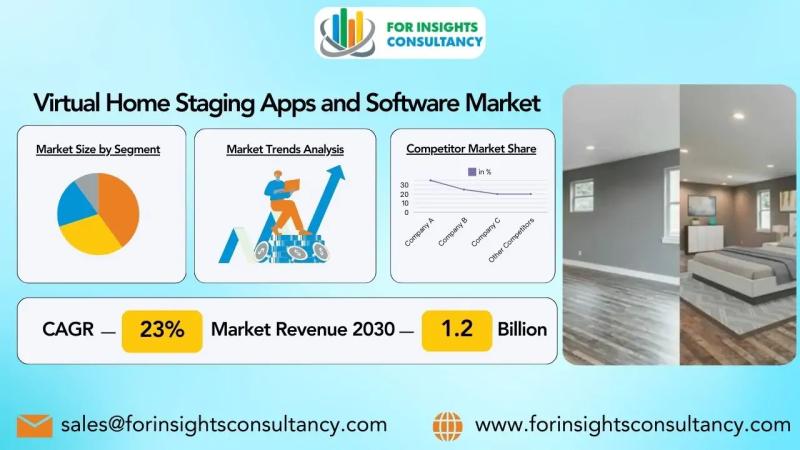If you’ve been inspecting properties to buy, you’ve probably come across homes that have been styled.
“Most agents will highly recommend doing a staging to create that ‘wow factor’, because an empty property has no personality,” says buyer’s agent Rich Harvey, based in Sydney/Gadigal Country.
“It’s been proven you get more money [in the sale] even though you might spend between $5,000 and $15,000 for styling.”
Staging usually involves bringing in hired furniture, artwork, plants, linen and other decorative items for the duration of the listing.
While styling might impress you as a prospective buyer, can it also mislead you?
The point of staging
Vivian Trantan is a buyer’s agent in Brisbane/Meanjin, and says styling is about getting buyers’ attention.
“When it comes to marketing, it’s about capturing their attention in the first few seconds when looking at photos of properties online.
“You are selling a dream essentially.“
Mr Harvey says while creating an emotional connection between a buyer and a property is an advantage for the seller, staging can also be helpful for the buyer.
“The buyers can visualise how they would style the home, what type of furniture they would get,” Mr Harvey says.
“They can see how to use the room and its functionality.”
Staging is designed to capture a buyer’s attention and help them imagine themselves living there. (Adobe Stock)
Former property stylist Alex Mills says when staging a home, she would appeal to the demographic most likely to be interested in purchasing.
“For first home buyers, I might lean into selections that make the space feel warm, comfortable and approachable,” says Ms Mills, who now works as an interior stylist and photographer in Newcastle/ Mulubinba.
“For a multi-million-dollar property … I might lean into a more editorial or high-end look.”
For partial staging, she would always recommend that personal elements, such as family photos or personal items, be removed from the space.
“Buyers don’t want to feel like they are walking into someone else’s home,” she says, adding they instead want to feel like “I could see myself living here”.
What to look out for
When Ms Mills was looking to buy a property, she was “swept up in the magic” of a perfectly staged home, even while working in the industry.
“The kind of home that looks so beautiful in both the online photos and when you walk through, that it’s hard not to fall in love and put your best offer forward.”
She recommends buyers keep in mind that staging can distract from other “less obvious red flags” you should keep an eye out for.
Mr Harvey says you need to be mindful “not to fall in love with the cushions or the couch“.
“That won’t be there when you settle.
“You’ve got to look at the bones of the property, the floor plan, room sizes, natural light, and storage.”
He says to bring a tape measure when inspecting a property. “Make sure your king-size bed will fit in that second bedroom,” for example.
He says stylists may opt for double beds in a master room to make a room appear larger.
“With cushions scaled down to make [the bed] look bigger than it really is.”
Opting for round tables over rectangle tables is another trick to create the illusion of more space, according to Mr Harvey, as is using light-coloured items and palettes to brighten rooms.
He also warns about throw rugs covering floor damage, mirrors to make spaces look deeper, lamps and other artificial light to brighten dark rooms, and furniture placed in “awkward” corners to make them appear usable.
“They might have a tiny little writing desk, and you think, ‘Why is that there?’. Nothing else will fit, that’s why,” Mr Harvey says.
Lamps may be used to make spaces appear brighter than they really are. (Pexels)
Ms Trantan says large pieces of furniture may also be used to hide damage to walls.
“Condensation, dampness, mould — that can easily be tucked away in certain corners.”
She says to also take note of cupboards, doors and windows. Are there missing door handles, for example?
“Some things aren’t as noticeable when a property is staged or had some kind of uplift,” such as a basic renovation or fresh coat of paint.
Also check if any key items are missing from the space. Is there a TV? And if not, is there room to fit one?
Is it OK to move items?
With so many people showing up to property inspections these days, it can be hard to get a good look at the space, says Ms Trantan.
She says people should be comfortable about taking their time to “get a peek around those corners”, look behind couches and beds, under rugs, and even inside cupboards if the property is vacant.
“The biggest tip I can provide would be to really take your time as you work through these spaces.
“If the property is owner-occupied or tenanted, you may need to be more respectful in those cases.”
But remember, most major issues should be picked up with a building and pest inspection, says Mr Harvey.
“Make your offer subject to that. Don’t go to an auction without having completed a building and pest.”
The ACT government requires a building and a pest inspection report to be made available to a buyer before a property is offered for sale.
Most other governments recommend that prospective home buyers obtain a building inspection before purchasing a property, and that the buyer make it a condition of the sale contract that they must be happy with the results of the inspection before the sale is finalised.
“Ask the agent if there has been a history of water damage, or history of issues owners have had to deal with,” he says as an example,” says Mr Harvey.
Ultimately, he says don’t let the “wow factor” sway your emotions.
“Buying a home is emotional, but don’t let rugs and cushions sway your decision.”
Discover more from NorthScapes Realty
Subscribe to get the latest posts sent to your email.



